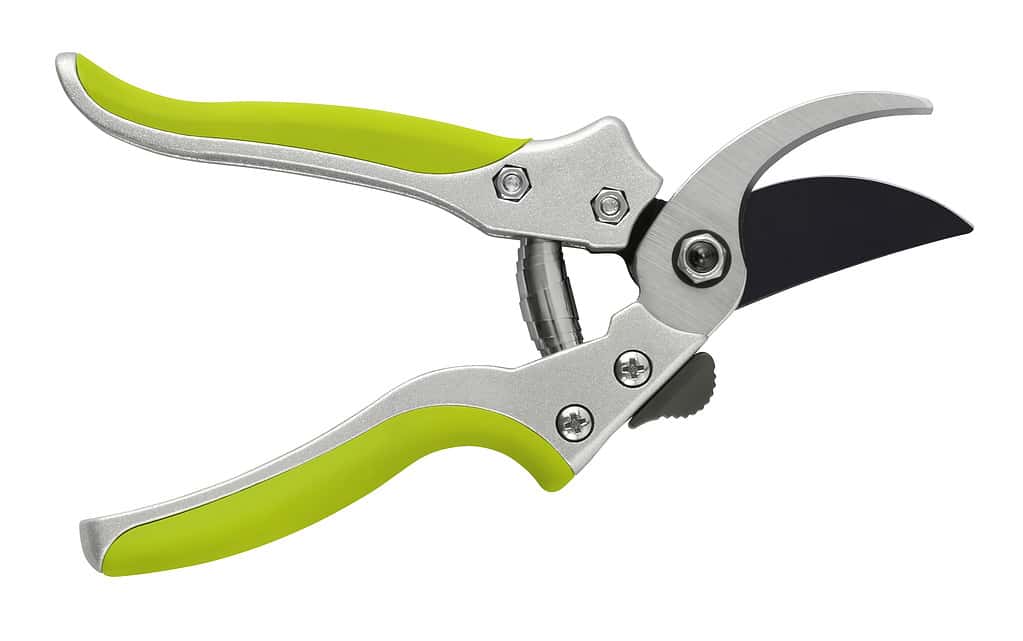Easter lilies are a common sight at grocery stores and nurseries every spring. They signal a new beginning as the snow melts and the flowers blossom. And while many people purchase potted Easter lilies, they are relatively easy to grow. However, ensuring they survive the winter months takes some care. We want to help your beautiful flowers thrive, even after the harshest cold spells. Below, we provide five tips for helping Easter lilies survive the winter.
What are Easter Lilies?

Easter lilies are magnificent flowers that typically hit store shelves every spring, just in time for Easter.
©Peter Krisch/Shutterstock.com
Easter lilies (Lilium wallichianum) belong to the Liliaceae (lily) family, a group of flowering plants. There are over 600 species in 50 genera in the lily family. Easter lilies are perennial flowers that thrive in USDA Hardiness Zones 4 to 8. They are most commonly grown from bulbs that get planted in either the spring or fall. Make sure to wait before planting the bulbs in the ground until after the last freeze. They don’t need a period of cold stratification to bloom. You can also transplant a potted flower after the risk of frost has passed.
These stunning flowers are native to China and Japan. They didn’t arrive in England until 1819 after Carl Peter Thunberg “discovered” them. And they ultimately hit America’s shores in the late 1880s. However, they weren’t grown commercially in the United States at large scale until World War II started. Now, most Easter lilies come from a handful of growers in Oregon and California.
But you can successfully grow your own at home! Follow a few standard care tips and take extra protective measures in the winter to see your plant thrive. One note of caution is that these lilies are toxic to cats. So, you will want to keep your plant out of the reach of your feline friends.
5 Tips for Keeping Easter Lilies Alive in the Winter

Give your Easter lily a little attention and how you help it survive the winter.
©COULANGES/Shutterstock.com
Helping your Easter lily survive the winter is a straightforward task. All it takes is a little extra attention and some handy tips, which you will find here.
#1 – Bring Containers Indoors
Perhaps you left your beautiful Easter lily in its pot after purchasing it or receiving it as a gift. That’s perfectly ok! Easter lilies can survive in pots as long as they are properly cared for. One of the most important things is to ensure the plant gets brought into a warmer, more protected environment during the colder months. It can remain outside on warm and sunny days as long as it comes indoors during cold spells.
#2 – Prune the Easter Lily

Prune your Easter lily back pretty close to ground level. You only want to leave a few inches of the plant exposed.
©Visivasnc/ via Getty Images
Since Easter lilies die off in the winter, the stems and leaves will turn brown after frost. That’s a normal step as the plant prepares for its dormancy period. Once you see the lily developing brown leaves and stems, it is ready to get pruned back. Cut it back until only approximately 3 inches remain above the soil.
#3 – Mulch Well
Whether your Easter lily is in the ground or a container, protecting the bulb against freezes is vital. A nice thick layer of mulch will do the trick. You will want to add this mulch layer after the first freeze. It will protect the bulb through the winter. Feel free to add a thick layer of leaves, wood chips, or straw/hay. The local nursery or garden center should have a decent selection to choose from.
#4 – Fertilize
It isn’t necessary to fertilize your Easter lily before winter hits. The plant doesn’t require much nutrition while it is dormant. However, providing adequate nutrients before it begins growing again will encourage the lily to grow properly. Apply a small amount of slow-release fertilizer once the ground starts to thaw. You can simply scratch it into the surface and let it work its magic!
#5 – Avoid Overwatering
Sometimes, it is tempting to continue watering plants all year. After all, they are living things that need adequate moisture, right? Yes…and no. Easter lilies start a new growth cycle each spring. They will need adequate water (but not too much) during this stage of their lives. However, in the winter, they are dormant. Plants that live outside will cease growth altogether and don’t need any more moisture than what naturally occurs during storms. Those in containers may continue some very slow growth, but they don’t require much nutrition or water during this cycle. Let the soil dry out completely before watering your potted Easter lily.
The photo featured at the top of this post is © Peter Krisch/Shutterstock.com
Thank you for reading! Have some feedback for us? Contact the AZ Animals editorial team.






